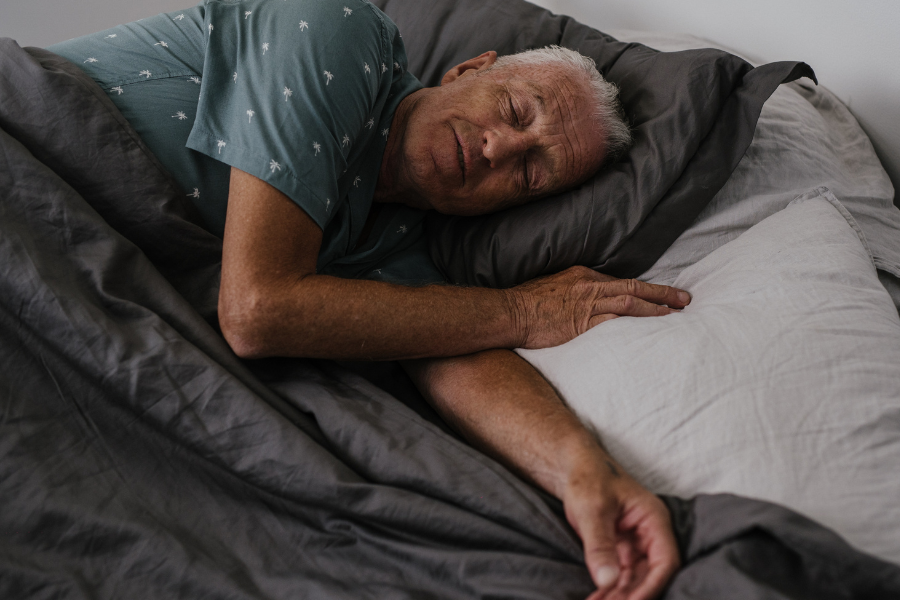
- What Are Bedsores?
- Can Bedsores Be Prevented?
- What Actions Should Be Taken to Prevent Bedsores?
- What Are the Risks Associated With Bedsores?
Bedsores, or pressure ulcers, are painful wounds that often develop due to a combination of factors, including changes in skin health, decreased mobility, chronic illnesses, and prolonged periods of immobility. If you have elderly loved ones, you must know the risks and prevention strategies associated with bedsores.
Pressure ulcers affect approximately 3 million adults, but the good news is that up to 95% of these wounds can be prevented with proper care. This includes frequent repositioning, regular skin assessments, and adhering to evidence-based protocols.
At Freedom Health & Wellness, we understand the complexities surrounding bedsores and are committed to providing you with the knowledge and tools necessary to prevent their occurrence effectively. In this article, we will delve into the causes, risk factors, and prevention strategies for pressure ulcers, empowering you to take proactive steps in maintaining the health and comfort of your elderly loved ones.
What Are Bedsores?
Bedsores, also called pressure ulcers or decubitus ulcers, occur when the skin and underlying tissue are damaged due to prolonged pressure. These ulcers usually appear on areas of the body where bones are close to the skin’s surface, such as the hips, heels, tailbone, and ankles.
People with medical conditions that limit movement or those who are immobilized for long periods are most at risk for bedsores. Bedsores can develop gradually over a few hours or days. Although many sores improve with proper treatment, some may never heal completely.
Fortunately, proactive measures can be taken to prevent bedsores from forming and promote the healing process.
Symptoms
Indicators of bedsores or pressure ulcers include:
- Abnormal alterations in skin color or texture
- Swelling
- Discharge resembling pus
- Skin that feels cooler or warmer compared to surrounding areas
- Sensitivity or tenderness
Bedsores are categorized into various stages depending on their depth, severity, and distinctive features. The extent of skin and tissue damage varies, ranging from superficial changes in skin color to profound injuries involving muscle and bone.
Can Bedsores Be Prevented?
 Individuals entering nursing homes or facing limited mobility due to age, injury, or illness aren’t inevitably predisposed to bedsores. Effective care practices, including:
Individuals entering nursing homes or facing limited mobility due to age, injury, or illness aren’t inevitably predisposed to bedsores. Effective care practices, including:
- Regular movement
- Adequate hydration
- The application of barrier creams
Immobility due to illness or spinal cord injuries, incontinence, neurological disorders, or spinal cord injuries can all increase the risk of bedsores. Consistent attention from healthcare professionals is important in preventing this condition.
What Actions Should Be Taken to Prevent Pressure Sores?
Healthcare providers and caregivers must regularly reposition geriatric patients to prevent bedsores. Long-term care facilities and families providing home care can also implement personalized protocols to reduce bedsores.
Frequent Repositioning of the Body
Bedsores can form within a week if someone is immobile. Skin breakdown can occur under sustained pressure in at least two to three hours. Repositioning every one or two hours can prevent bedsores. Keep vulnerable areas free of excessive pressure, such as the head’s tailbone, hips, elbows, and back.
Skin Care Regimens
To maintain skin cleanliness, use mild soap and warm water and gently pat damp areas dry. Talcum powder can help keep vulnerable areas dry. Caregivers face challenges in preventing bedsores by finding the right balance in a skincare routine.
Special Mattresses
Memory foam and latex mattresses prevent bedsores by reducing pressure on vulnerable areas like the hips and elbows. They promote comfort and healthy pressure distribution.
Proper Nutrition
A balanced diet is important in maintaining healthy skin and lowering the risk of bedsores. Nutritional strategies may incorporate supplements like vitamin C and zinc, along with
adequate hydration to promote skin health and resilience against developing bedsores.
What are the Risks Associated with Bedsores?
 Unfortunately, the biggest risk is a loss of life. According to the AHRQ, complications from bedsores cause more than 60,000 deaths each year. This means that approximately one person dies every nine minutes.
Unfortunately, the biggest risk is a loss of life. According to the AHRQ, complications from bedsores cause more than 60,000 deaths each year. This means that approximately one person dies every nine minutes.
In cases where bedsores are the cause of death, over 55 percent of nursing home residents pass away within six weeks of the pressure sore’s onset. Additionally, nursing home residents with infected pressure injuries lasting over six months face a staggering 75 percent mortality rate.
People aged 64 or older are at a higher risk of developing bedsores and facing complications. This risk is particularly high for those with circulatory, pulmonary, or renal issues. Moreover, inadequate nutrition further increases the likelihood of mortality due to bedsore complications.
Protecting the skin health of our elderly population is paramount to their overall well-being and quality of life. By understanding the causes of bed sores and implementing preventive measures, caregivers can help ensure that their loved ones remain comfortable and free from the pain and complications associated with pressure ulcers. If you’re concerned about the skin health of your elderly family members, don’t hesitate to schedule an appointment with Freedom Health & Wellness today.




